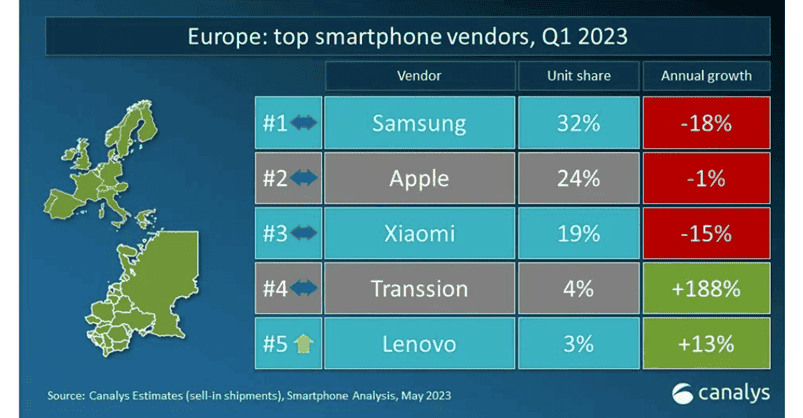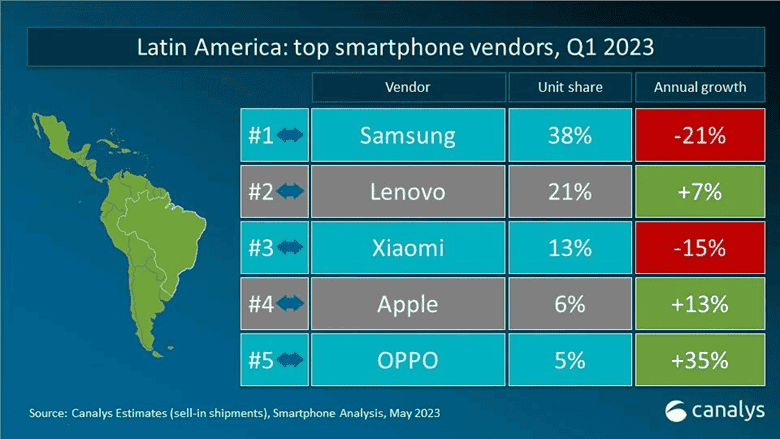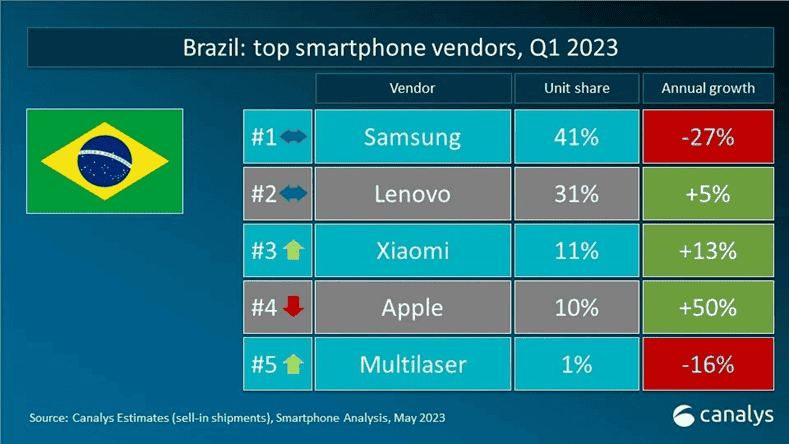Although Motorola launched some low priced devices, it failed to make a huge impact in the market. Lenovo acquired Motorola a few years ago, the company had not yet seen the benefits of this purchase until now. Despite buying Motorola, Lenovo mobile phones have been on the path to a fatal decline. However, it seems that the company is performing well in specific markets, particularly those in Europe and Latin America.
According to Canalys, a market research firm, Lenovo mobile phones have beaten the trend in major markets like Europe and Latin America. The company also performs pretty well in Brazil which is one of the world’s five largest mobile phone markets. This marks the first time in six years that Lenovo has broken into the top five ranking in a major market. These gains are mainly due to Lenovo’s buying of Motorola and the phrase “Motorola is back” is now popular.

Lenovo in Europe
In terms of market share, the company hit the fifth position. This is the best position that Lenovo has ever ranked since the third quarter of 2017. In Poland alone, Lenovo’s mobile phone growth has risen to double digits. In Eastern Europe’s Romania, Bulgaria, and Italy, Lenovo’s mobile phone growth rate exceeds 10%.

Lenovo in Latin America and Brazil
Lenovo’s mobile phone shipments in Latin America and Brazil climbed by 7% and 5% per year, respectively. Also, its market share ranks second at 21% and 31%, respectively. You may be aware that during the same time period, shipments of mobile phones fell year over year in Europe, Latin America, and Brazil by 12%, 10%, and 9% respectively.

In reality, for the past eight years, Lenovo has held the second-largest position for mobile phones in Latin America. In the previous six years, its market share has doubled. It ranks first with a market share of up to 40% in Argentina, another major player in Latin America. Also, Lenovo cell phones in North America came in third place.
Gizchina News of the week
Lenovo to increase investments
Based on this, Lenovo stated that it will raise investment in the American and European markets and maintain its share growth. Lenovo, to use Brazil as an example, invests roughly 200 million Brazilian reals ($40.9 million) yearly in R&D. It now works with 14 Brazilian research organisations and schools and has more than 1,500 researchers. A 5G research lab has been built in partnership with a federal university.
In addition, Lenovo cell phones offer a few unique features. For instance, its phone is the first to support two critically endangered regional indigenous languages. In Brazil, where many phone users do not have bank accounts, Lenovo built digital bank accounts into their phones. In order to meet local users’ preference for fragrance, Lenovo even launched two mobile phones, specifically for Brazil.
Lenovo has been investing heavily in mobile phones. It spent $793.5 million in Wuhan to build a plant that can produce 30 to 40 million phones per year. The company is projected to sell 80 million mobile phones globally in the fiscal year that began on 1 April. Lenovo’s net profit increased 53% to $395 million, and revenue rose 22% to $17.2 billion in 2020.
Lenovo’s mobile business achieved a profit for the first time in ten years. The company had to withdraw from many markets outside China. This gave the company enough room to focus on the markets that it considers important. “Mobile phones are our long-term focus. After we begin to gain profits and our business gets on the right track, we will continue investing in innovation, channels,” said Lenovo Holdings.
Final Words
Lenovo’s recent investments in mobile phones have been huge, and the company has been successful in China and other regions. In recent times, its sales in Europe, Latin America and Brazil are quite good. The company’s mobile business achieved a profit for the first time in ten years. Despite a couple of issues, the company is not backing out of the mobile phone market.





